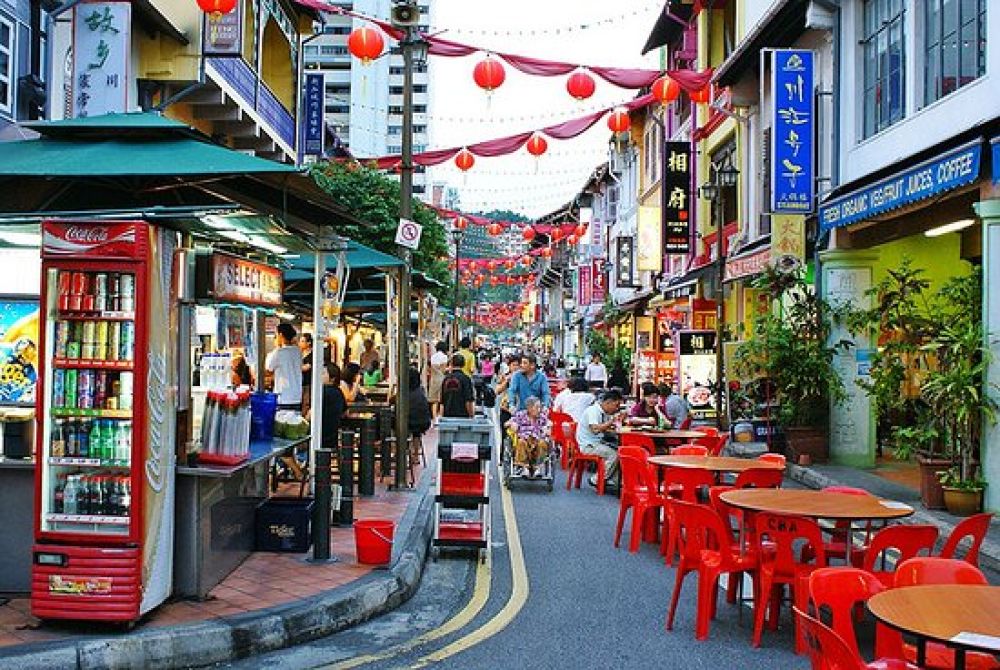

Singapore's Chinatown Street Market, located along the bustling Smith Street, is a vibrant tapestry of culture, history, and commerce that has been an integral part of the city's tourism landscape. As you walk down the lively street, you are transported into an eclectic world where traditional and modern elements merge, offering an authentic glimpse into the cultural heritage of Singapore's Chinese community.
The market's bustling atmosphere is characterized by the rows of traditional shophouses, which are key architectural landmarks of the area. These historical structures are not only aesthetically pleasing but also stand as a testament to Singapore's colonial past and the Chinese immigrants who settled here. Today, they house a plethora of goods ranging from souvenirs and traditional craftsmanship to fashion and home decor.
Smith Street, also known as 'Food Street', offers an array of culinary delights. The scents of roasted meats, stir-fried noodles, and savory dumplings fill the air, enticing visitors with their irresistible aromas. Sampling the local food at the hawker stalls and quaint eateries gives visitors a taste of the traditional flavors that make Singapore’s cuisine famously diverse.
At night, the street transforms into a lively food street where al fresco dining is the norm, and people can enjoy their meals under the ambient light of lanterns that adorn the skies above.
The genesis of Singapore's tourism industry can be traced back to its colonial days when it served as a vital stopover for steamships traveling between Europe and East Asia. Its strategic location made it an appealing destination for traders and travelers alike.
Post-independence, the Singapore Tourism Promotion Board (STPB), established in 1964, marked the beginning of a concerted effort to develop Singapore as a major tourist destination. The board initiated the development of various attractions, accommodations, and infrastructure to cater to international tourists.
Through the years, Singapore has successfully transformed itself into a global tourism hub, with iconic landmarks like the Marina Bay Sands, Gardens by the Bay, and the Singapore Zoo. The unique blend of diverse cultures, including Chinese, Malay, and Indian, creates a rich cultural tapestry that is enticing to visitors.
With the evolving global tourism landscape, Singapore has been quick to adapt and innovate. The latest trends have seen a shift towards sustainable tourism practices, where efforts are made to reduce the environmental impact and promote cultural preservation. There's also an emerging emphasis on experiential travel where visitors seek authentic local experiences over conventional sightseeing.
Technology has also played a transformative role; the integration of apps and virtual reality offers a seamless and interactive experience for tourists. Additionally, as travel habits shift post-pandemic, there is a trend towards health and wellness tourism in Singapore, with visitors looking for destinations that prioritize safety, cleanliness, and well-being.
The ever-evolving nature of tourism in Singapore reflects the city’s dynamism and commitment to enhancing the visitor experience. Smith Street in Chinatown is a microcosm of this spirit, promising an unforgettable encounter with Singapore’s rich history and cultural vitality.